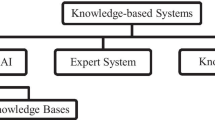Abstract
KIII model is an olfactory model proposed by W. J. Freeman referring to a physiological structure of mammal’s olfactory system. The KIII model has been applied to kinds of pattern recognition systems, for example, electronic nose, tea classification, etc. However, the dynamics of neurons in the KIII model is given by Hodgkin-Huxley’s second-order differential equation and it consumes a very high computation cost. In this paper, we propose a simplified dynamics of chaotic neuron instead of the Hodgkin-Huxley dynamics at first, and secondly, we propose to use Fourier transformation with high resolution capability to extract features of time series behaviors of internal states of M1 nodes in KIII model instead of the conventional standard deviation method. Furthermore, paying attention to the point that human brain does visual processing as same as olfactory processing in the sense of information processing, a handwriting image recognition problem is treated as a new application field of KIII model. Through the computer simulation of the handwriting character classification, it is shown that the proposed method is useful by the comparison of experiment results with both computation time and recognition accuracy.







Similar content being viewed by others
References
Hung-Jen Chang, Walter J. Freeman, Brian C. Burke, Optimization of olfactory model in software to give 1/f power spectra reveals numerical instabilities in solutions governed by aperiodic (chaotic) attractors, Neural Networks 11, pp 449-466 (1998)
Jun Fu, Guang Li, Yuqi Qin, Walter J. Freeman, A pattern recognition method for electronic noses based on an olfactory neural network, Sensors and Actuators B 125, pp 485-497 (2007)
Chang. H.J., Freeman W.J., Biologically Modeled Noise Stabilizing Neurodynamics for Pattern Recognition, Int J of Bifurcation and Chaos, 8(2) pp 321-345 (1998)
Xinling Yang, Jun Fu, Zhengguo Lou, Liyu Wang, Guang I, Walter J. Freeman, Tea Classification Based on Artificial Olfaction Using Bionic Olfactory Neural Network, NCS, pp 343-348 (2006)
Freeman WJ (1987) Simulation of Chaotic EEG Pattern with a Dynamic Model of the Olfactory System. Biol Cybern 56:139–150
Li Guang, Zhang Jin, Wang You, Freeman WalterJ (2006) Face Recognition Using a Neural Network Simulating Olfactory Systems. LNCS 3972:93–97
Skarda CK, Freeman WJ (1987) How brains make chaos in order to make sense of the world. Behavioral And Brain Science 10:161–195
Aihara K (1990) T.takabe and M. Tomita, Chaotic Neural Networks. Phys Lett A 144:133–340
Acknowledgments
This study was supported in part by a JSPS Grant-in-Aid for Scientific Research (Project No. 20500207, 20500277, 23500181).
Author information
Authors and Affiliations
Corresponding author
About this article
Cite this article
Obayashi, M., Koga, S., Feng, LB. et al. Handwriting character classification using Freeman’s olfactory KIII model. Artif Life Robotics 17, 227–232 (2012). https://doi.org/10.1007/s10015-012-0047-z
Received:
Accepted:
Published:
Issue Date:
DOI: https://doi.org/10.1007/s10015-012-0047-z




